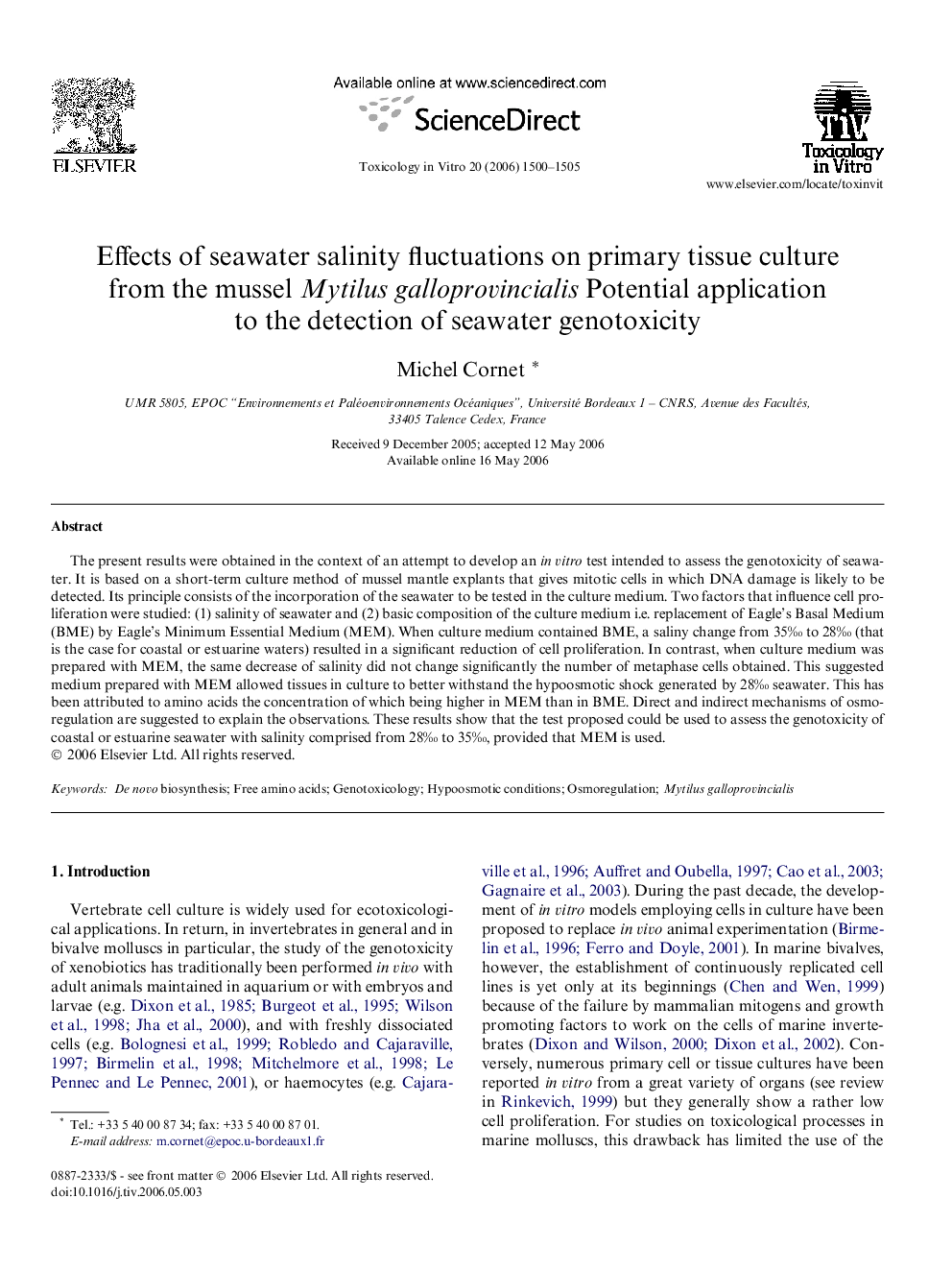| Article ID | Journal | Published Year | Pages | File Type |
|---|---|---|---|---|
| 2603594 | Toxicology in Vitro | 2006 | 6 Pages |
The present results were obtained in the context of an attempt to develop an in vitro test intended to assess the genotoxicity of seawater. It is based on a short-term culture method of mussel mantle explants that gives mitotic cells in which DNA damage is likely to be detected. Its principle consists of the incorporation of the seawater to be tested in the culture medium. Two factors that influence cell proliferation were studied: (1) salinity of seawater and (2) basic composition of the culture medium i.e. replacement of Eagle’s Basal Medium (BME) by Eagle’s Minimum Essential Medium (MEM). When culture medium contained BME, a saliny change from 35‰ to 28‰ (that is the case for coastal or estuarine waters) resulted in a significant reduction of cell proliferation. In contrast, when culture medium was prepared with MEM, the same decrease of salinity did not change significantly the number of metaphase cells obtained. This suggested medium prepared with MEM allowed tissues in culture to better withstand the hypoosmotic shock generated by 28‰ seawater. This has been attributed to amino acids the concentration of which being higher in MEM than in BME. Direct and indirect mechanisms of osmoregulation are suggested to explain the observations. These results show that the test proposed could be used to assess the genotoxicity of coastal or estuarine seawater with salinity comprised from 28‰ to 35‰, provided that MEM is used.
